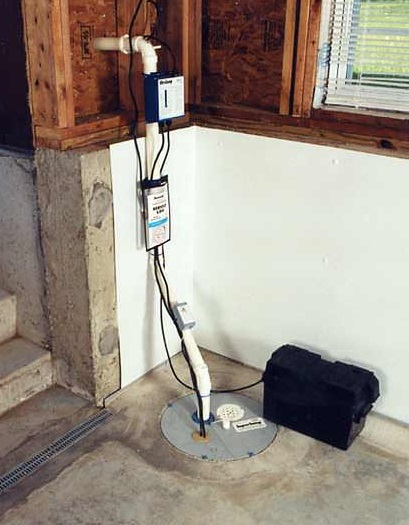 207-885-0771
207-885-0771It’s our Spring Cleaning for HVAC Series Part 2 this week, and we’re talking about basement appliances! We’ll be addressing heating and air conditioning systems specifically in the coming weeks, but the other HVAC elements including your hot water heater, ventilation and humidification systems, and sump pumps need to be on your spring cleaning list.

Not only can a busted hot water heater dump hundreds of gallons of water into your basement causing terrible water damage, but hot water heaters are serious fire hazards in the home as well. Many people don’t think about having their hot water heater serviced, but a simple, annual checkup can help keep the heater going longer and make sure your home is safe. Our thorough inspection costs less than $100, but can increase its energy efficiency, and the life expectancy of the unit significantly!
When we service a hot water heater, we always drain a few gallons from the bottom of the tank to clear out any sediment and debris. We also inspect the sacrificial anode rod which is key to prolonging the heater’s lifespan. Finally, we check the relief valve, examine the electrical and mechanical connections for tightness, and visually inspect the equipment for corrosion or other indicators that can be early detection for a future leak or blow out. This thorough inspection costs less than $100, but can increase its energy efficiency, and the life expectancy of the unit significantly!
DIY Tip: Keep the area around your Hot Water Heater cleared by a 2-foot radius. Whether gas or electric, hot water heaters need oxygen to run efficiently, and protect the burner and other parts from overheating. Also, do not put insulation near the water pipes leaving the heater, as this can be a fire hazard.

Keeping moisture under control in the basement is crucial. If you have a ventilation system, make sure all the ductwork and other vents are clear from debris and working properly. Repair broken windows and access doors and make sure they are sealed.
A correctly sized dehumidifier can be a great help in the fight against moisture. Dehumidifiers are sized based on their capacity to remove moisture, rated in pints of moisture removed per 24-hour period. So, for example, when you see a “30-pint dehumidifier,” you’re looking at a model that is rated to remove 30 pints of moisture total per day. A dehumidifier’s capacity loosely indicates how large of a space it will cover in square feet. Therefore, if you know the square footage of the area you’d like to dehumidify, you can get a loose idea of the capacity you will need. If you are removing moisture from a particularly damp environment, sizing up to a larger unit is a good idea.
At least once a year, give your unit a thoroughly cleaning by removing the housing and letting it dry completely. Vacuum every accessible surface and crevice, and check the drainage hose to make sure there are no clogs.
Melting snow brings on A LOT of water run-off, and much of that water will go right into people’s basements, and you do not want to be caught unprepared and end up with a flooded basement!

If you already have a sump pump, it should be on your list of items to check annually to make sure it is operating property – before you need it. Your sump pump should discharge the water to your home’s basement drainage system or out into the yard – never hooked up to the sanitary sewer or a sink drain. Since this equipment usually sit for months without use, it is a good idea to check them over regularly, before you will need it!
Every year we have clients that experience basement flooding for the first time, so even if you do not have a sump pump, it’s not a bad idea to consider one. Installed for around $450, it’s a small investment to make considering the alternative! Keep your basement appliances maintained!